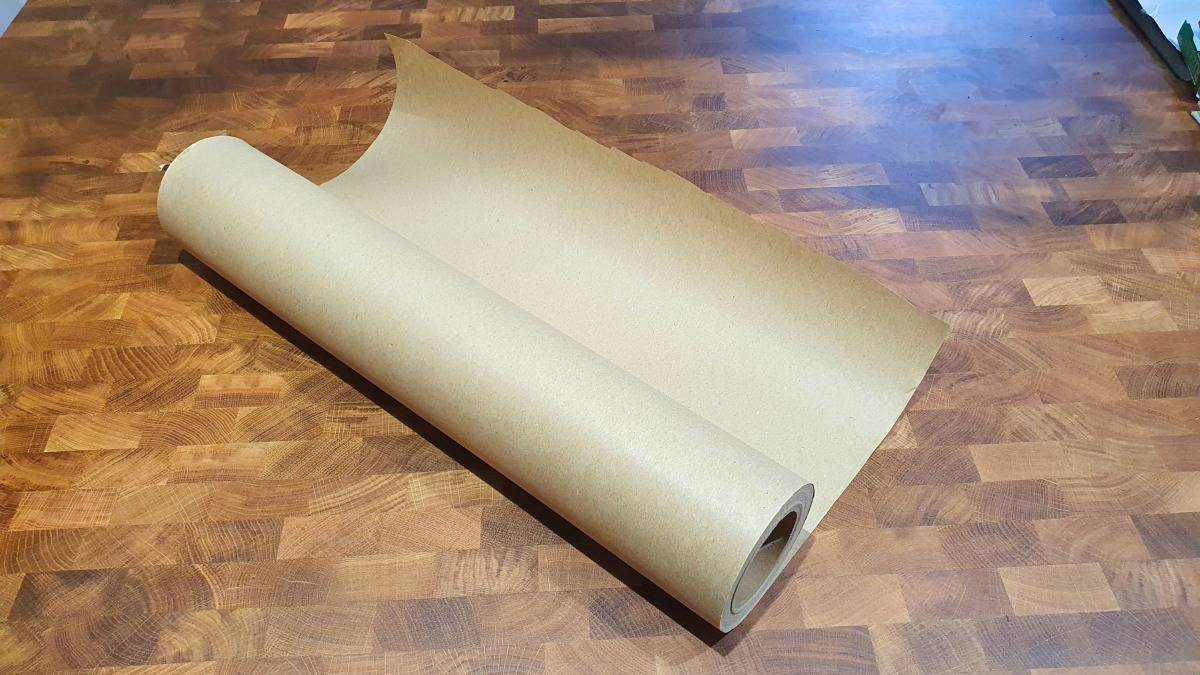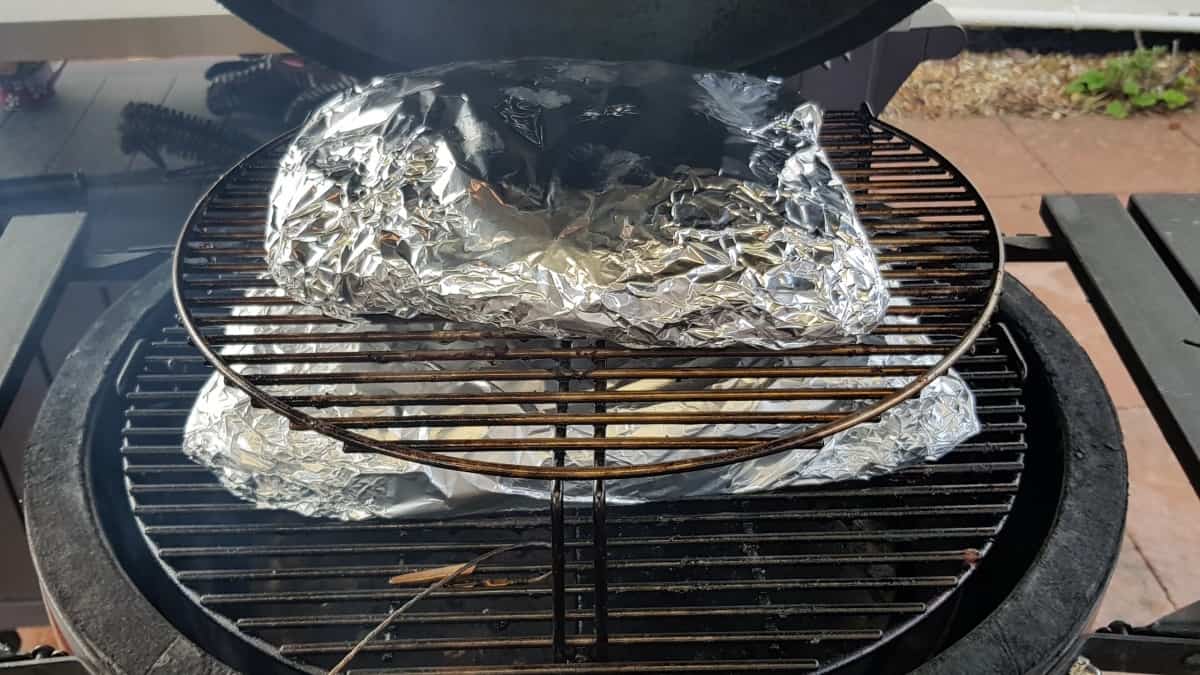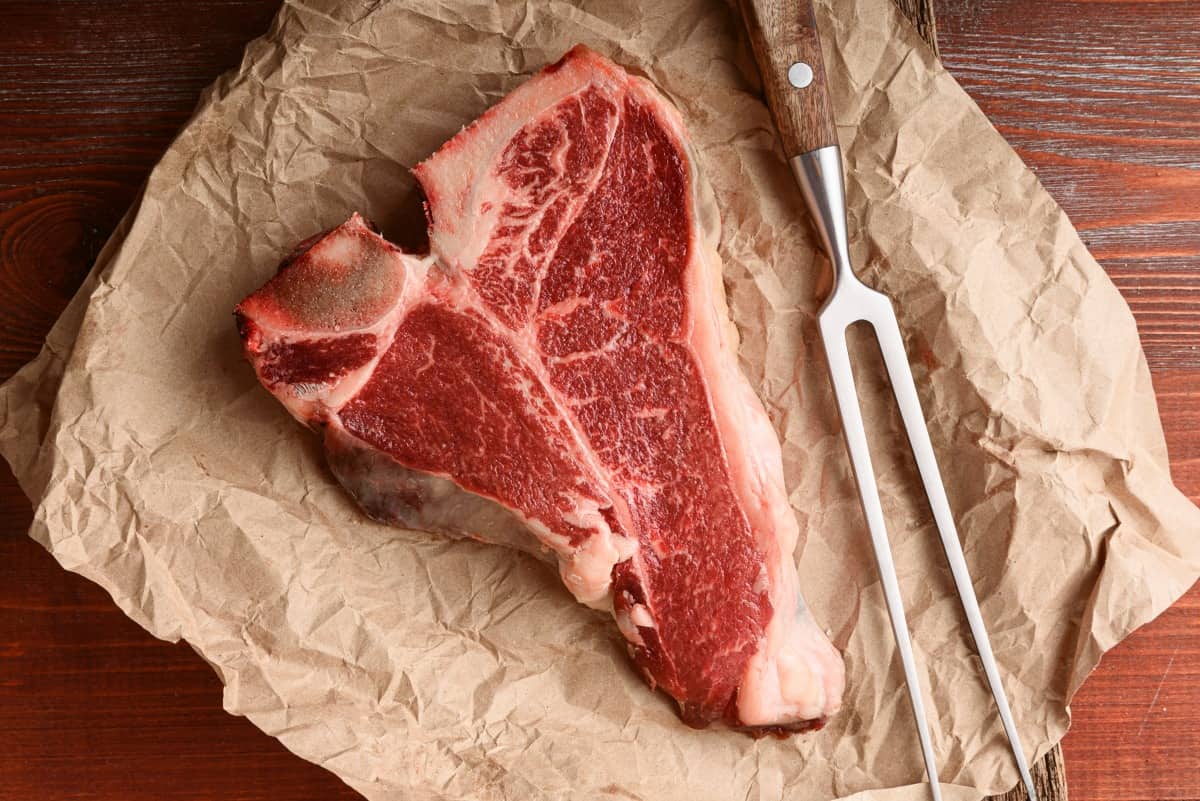How to Wrap Beef Brisket in Butcher Paper
So what's the big deal with pink butcher paper, and why should you care? We're going to explore these questions and more as we unwrap the mystery of barbecuing with butcher paper.
Trends and fads come and go. The ones that makes sense stick around, like energy-efficient light bulbs.
For some fads, we collectively decide they make zero sense, and they vanish as quickly as they appeared, like bell-bottom pants and wide-screen tube TVs.
It can be difficult to predict which way a fad is going to go, but sometimes you see one that seems like a sure bet. Pink butcher paper looks like it fits into this category.
It's been a couple of years since pink butcher paper first appeared on the barbecue scene (of course it has been in butcher shops for as long as any of us can remember!), and it seems to be continually picking up steam. Let's dig into why it's become so popular.
Contents (Jump to Topic)
- 1 What is Pink Butcher Paper?
- 2 Why Is Pink Butcher Paper Popular with Barbecuers?
- 3 When and How Do I Use Pink Butcher Paper?
- 3.1 Butcher Paper Vs. Foil
- 3.2 Butcher Paper Vs. Steak Paper
- 4 What Else is it Useful For?
- 5 Where Can I Buy Pink Butcher Paper?
- 6 That's A Wrap
What is Pink Butcher Paper?

If you've ever bought meat from a butcher or even the butcher's counter at a grocery store, you're familiar with the signature wrapping in which your cuts are packaged. This is pink butcher paper, though it is sometimes referred to as peach paper.
Don't mix this up with freezer paper, or even white butcher paper. They have very different properties.
For one, pink butcher paper is pure and unbleached, unlike the white variety, while freezer paper has a plastic film on one side and is unsuited to subjection to high temperatures.
True pink or peach butcher paper is made from virgin pulp, it is FDA approved, and it's 100% food grade.
Why Is Pink Butcher Paper Popular with Barbecuers?
How does anything become a fad? Usually, it starts when someone famous is seen with it.
In this case, you can pin it on Aaron Franklin, owner of Franklin Barbecue in Austin, Texas. In case you're not familiar with it, it's a legendary BBQ joint where people line up for hours to get a taste of what's on the grill.
People like Anthony Bourdain and Barack Obama sing the praises of the brisket, and Mr. Franklin has won basically every barbecue award there is. So, when he tries out a technique, people take notice.
So, it's no surprise that when folks noticed he was wrapping his brisket in pink butcher paper, the word spread. And that, dear readers, is how a fad is born.
 Editor's Note
Editor's Note
When I first bought pink butcher paper, I paid for a pack of pre-cut leaves all the same size. Mistake! I highly recommend buying it in a roll so that you can cut it to the length and size required, which is so much easier to use!
— Mark Jenner
When and How Do I Use Pink Butcher Paper?
The most common reason why many pit-masters use paper is to hold moisture during the last stages of cooking. It can also help get past "the stall" when smoking meat, especially brisket.
What is "the stall," you ask? In a nutshell, it's a point at which the internal temperature of a large piece of meat stops rising during a long, low 'n' slow session.
Want to know more? Click here for the full story: What is the BBQ stall? And how to beat it.
Wrapping your meat late helps lock in the heat and moisture as the meat nears the end of the cook. The loose-fitting, loose-fibered paper allows the meat to breathe better than foil does, which can be wrapped too tightly. Wrapping can speed up smoking times, too, so you'll be enjoying your food sooner.
Learn the finer details of the wrap during a brisket cook in our dedicated guide, when do you wrap a brisket?
Butcher Paper Vs. Foil

You may be familiar with the use of foil for wrapping during low 'n' slow smoking. It's commonly called the "Texas crutch."
While Texas crutch is great for pork ribs, particularly the infamous 3 2 1 ribs, it's less effective on beef. Once you wrap something in foil, you've created a reflective, impermeable layer. That means no more smoke gets in, but, since heat cannot escape, cooking continues unabated, no moisture escapes at all, and the beef becomes too moist, pot-roasty, loses the crispy bark, and loses the texture we typically associate with beef.
With paper, heat is more consistent, and there's no moisture lock. You'll get moist meat, for sure, but the paper does somewhat 'breathe', and you'll preserve the bark you want on your brisket or beef ribs. As one Texas journalist eloquently put it:
…butcher paper is, "a warm blanket of fat soaked paper."
Butcher Paper Vs. Steak Paper

Though they look similar and have similar properties, there are clear distinctions between the two.
Steak paper is commonly used for retail display. It's thicker and heavier than butcher paper, and it's meant to resist staining, and protect the meat from the air. It comes in several colors, each intended to allow easy identification of the type of meat inside (i.e., beef, pork, fish, etc.).
If you try to smoke with steak paper, you won't get the effect you're after. The very properties that make it great for storage make it less than ideal for smoking.
What Else is it Useful For?
You can also use pink butcher paper after cooking to preserve the warmth and tenderness while the meat is waiting to be served. In fact, that's what Mr. Franklin uses it for. Makes sense when you're making brisket on a commercial scale, because it might be sitting there for a few minutes before it's purchased.
When it comes time to serve your beautiful barbecued meat, a bit of butcher paper makes for great presentation. Sending guests home with leftovers? Wrap it in paper! You can even shape it into cones for serving fries and wings.
If dry brining is your thing (more on that here: Complete guide to dry brining), you can wrap your brining meat in the paper while it sits in the fridge.
Cooking meat in a pouch with seasonings is a popular technique most often done with foil. You can do the same thing with butcher paper. Called "en papillote," it's a French (obviously) style of cooking, and it's excellent for steaming delicate meat like fish and other seafood.
Where Can I Buy Pink Butcher Paper?

Until very recently, this was a product used almost exclusively for commercial purposes. For that reason, it isn't always easy to find. You might be able to get it at your local barbecue emporium, but you may need to order it from a wholesaler or manufacturer.
Keep in mind; this stuff comes in whacking great rolls. In fact, you can order 1000' rolls on Amazon that weigh more than 25 pounds. Unless you own a restaurant, or you're papering the walls of your home, you do not need that much paper.
Fortunately, you can also get it in 150' rolls, which are a lot more manageable. If you want to use the same stuff used in the recipe for an Aaron Franklin brisket, you can order it here:
Check Price on Amazon
There are other options available, in a variety of price ranges. Just be sure it's approved for food use.
That's A Wrap
That finishes our look at barbecuing with pink butcher paper. Feeling informed and inspired? It's amazing that this cool technique has been hiding under our collective noses all this time. Makes you wonder what else there is you haven't tried, doesn't it?
Of course, that's part of the fun of barbecue — there's always something new to discover! Browse through the articles on our site, and I'll bet you'll find at least a couple of things you've never tried, like unusual cuts of meat, international barbecue styles, or unique grilling techniques.
If you enjoyed this article, please pass it along to your family and barbecue buddies.
Now, if by chance you didn't enjoy it, we want to hear about it! That goes for anything on the site. Send us your comments, corrections, and concerns, and we'll do our best to address them. Same goes for any questions you might have about all things barbecue.
We look forward to hearing from you, and to sharing more of our mutual love of grilling. Best of the barbecue to you!
Source: https://www.foodfirefriends.com/pink-butcher-paper/
0 Response to "How to Wrap Beef Brisket in Butcher Paper"
Post a Comment